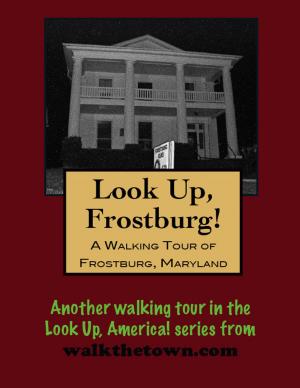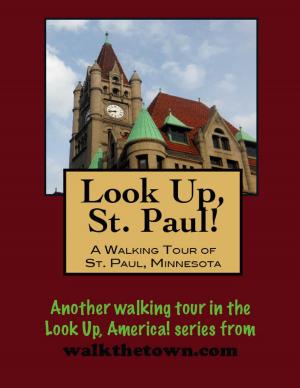| Author: | Doug Gelbert | ISBN: | 9781458011398 |
| Publisher: | Doug Gelbert | Publication: | March 3, 2011 |
| Imprint: | Smashwords Edition | Language: | English |
| Author: | Doug Gelbert |
| ISBN: | 9781458011398 |
| Publisher: | Doug Gelbert |
| Publication: | March 3, 2011 |
| Imprint: | Smashwords Edition |
| Language: | English |
There is no better way to see America than on foot. And there is no better way to appreciate what you are looking at than with a walking tour. This walking tour of Vineland, New Jersey is ready to explore when you are. Each walking tour describes historical, architectural landmarks, cultural sites and ecclesiastic touchstones and provides step-by-step directions.
Every tour also includes a quick primer on identifying architectural styles seen on American streets.
Everything about Vineland was the vision of one man - Charles Kline Landis. Landis was a Philadelphian trained as a lawyer who helped found the town of Hammonton on the Camden and Atlantic Railroad in 1857 when he was only 24 years old. Hammonton flourished rapidly and Landis next set his sights on creating his own town, an ideal utopian of a town. It would be a place of verdant fields of fruits and vegetables, a land of vines.
He searched much of New Jersey and heard about a new rail line connecting Millville to Glassboro. Rail service was a key to his plans both the transport newcomers to this town (there weren’t many roads in South Jersey at the the time) and also to send all that produce out to market. He talked his way into acquiring 16,000 acres of primarily swampland from Richard Wood for no money down and no interest for three years. The cost was $7.00 an acre and Wood would get a cut as the land was sold by Landis.
And land would come from Landis with strings aplenty attached. First, a house had to be constructed within one year. At least 2 1/2 acres of land must be cleared and cultivated each year. Speculators need not apply. Landis plotted out his land around the rail line with farms and orchards around one square mile in the center that would harbor development for factories, shops, homes, schools, churches and halls for recreation. The streets in this core would be laid out in a perfect grid of right angles and wide - the primary roads would be 100 feet wide. The names of Plum and Almond and Peach and Pear that Landis created still survive today
Landis put 20- and 50-acre tracts for sale at from $15 to $30 per acre, payable within four years. To advertise his lots he placed ads in the biggest New York and Boston and Philadelphia newspapers. When he discovered the soil was especially suited for growing grapes he started America’s first Italian-language newspaper to attract grape growers.
Vineland may have been his utopia but that wasn’t enough for the restless Landis. He would move on to develop the town of Sea Isle City at the shore and created Landisville which he saw as the hub of a new state county. That vision never came to pass but we will explore what became of his great experiment of Vineland and we will concentrate on Landis Avenue, which the founder staked out next to the railroad to be an extra-wide, tree-lined avenue along the lines of the Champs-Elysee in Paris...
There is no better way to see America than on foot. And there is no better way to appreciate what you are looking at than with a walking tour. This walking tour of Vineland, New Jersey is ready to explore when you are. Each walking tour describes historical, architectural landmarks, cultural sites and ecclesiastic touchstones and provides step-by-step directions.
Every tour also includes a quick primer on identifying architectural styles seen on American streets.
Everything about Vineland was the vision of one man - Charles Kline Landis. Landis was a Philadelphian trained as a lawyer who helped found the town of Hammonton on the Camden and Atlantic Railroad in 1857 when he was only 24 years old. Hammonton flourished rapidly and Landis next set his sights on creating his own town, an ideal utopian of a town. It would be a place of verdant fields of fruits and vegetables, a land of vines.
He searched much of New Jersey and heard about a new rail line connecting Millville to Glassboro. Rail service was a key to his plans both the transport newcomers to this town (there weren’t many roads in South Jersey at the the time) and also to send all that produce out to market. He talked his way into acquiring 16,000 acres of primarily swampland from Richard Wood for no money down and no interest for three years. The cost was $7.00 an acre and Wood would get a cut as the land was sold by Landis.
And land would come from Landis with strings aplenty attached. First, a house had to be constructed within one year. At least 2 1/2 acres of land must be cleared and cultivated each year. Speculators need not apply. Landis plotted out his land around the rail line with farms and orchards around one square mile in the center that would harbor development for factories, shops, homes, schools, churches and halls for recreation. The streets in this core would be laid out in a perfect grid of right angles and wide - the primary roads would be 100 feet wide. The names of Plum and Almond and Peach and Pear that Landis created still survive today
Landis put 20- and 50-acre tracts for sale at from $15 to $30 per acre, payable within four years. To advertise his lots he placed ads in the biggest New York and Boston and Philadelphia newspapers. When he discovered the soil was especially suited for growing grapes he started America’s first Italian-language newspaper to attract grape growers.
Vineland may have been his utopia but that wasn’t enough for the restless Landis. He would move on to develop the town of Sea Isle City at the shore and created Landisville which he saw as the hub of a new state county. That vision never came to pass but we will explore what became of his great experiment of Vineland and we will concentrate on Landis Avenue, which the founder staked out next to the railroad to be an extra-wide, tree-lined avenue along the lines of the Champs-Elysee in Paris...















